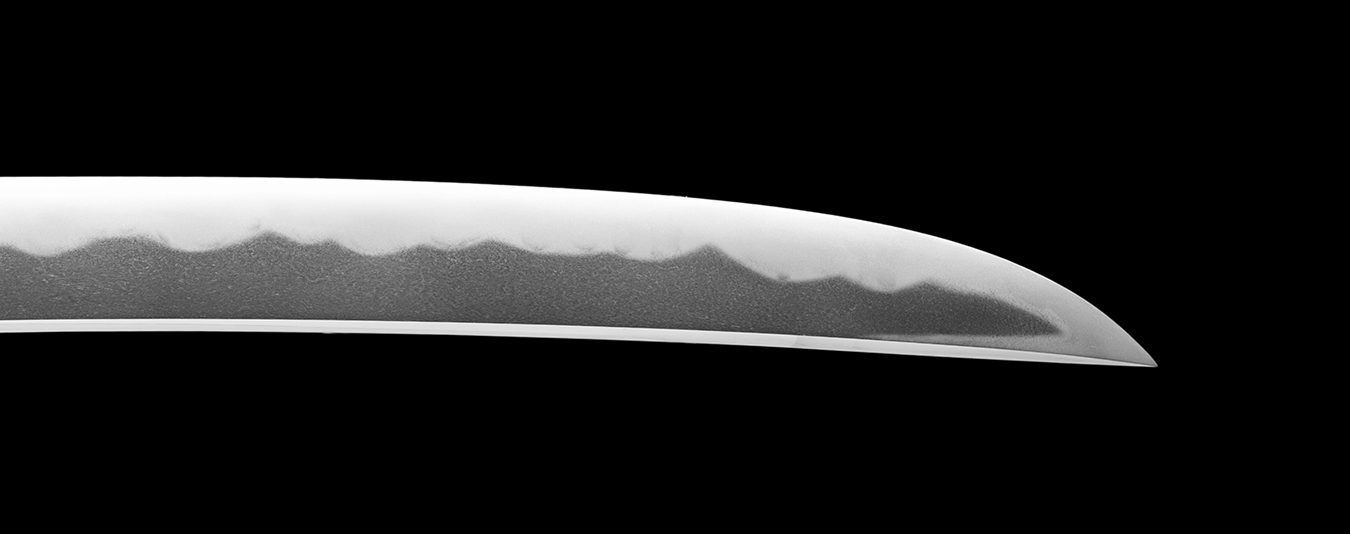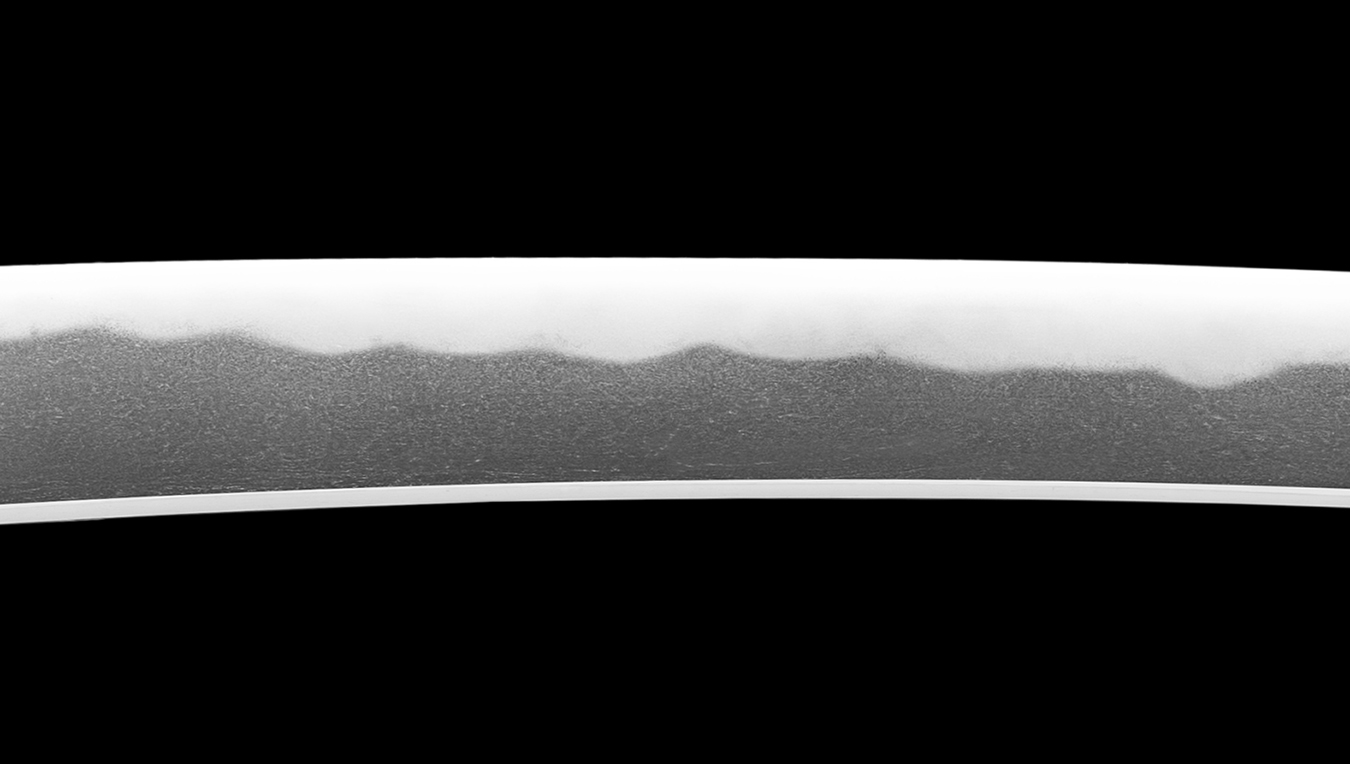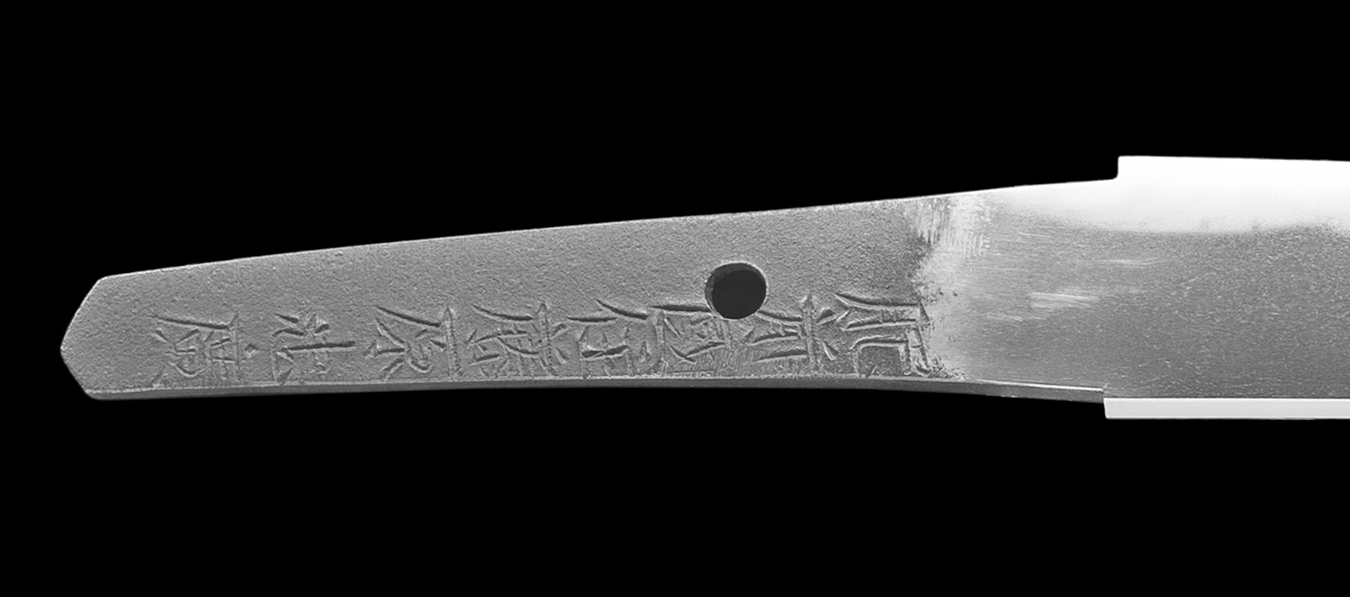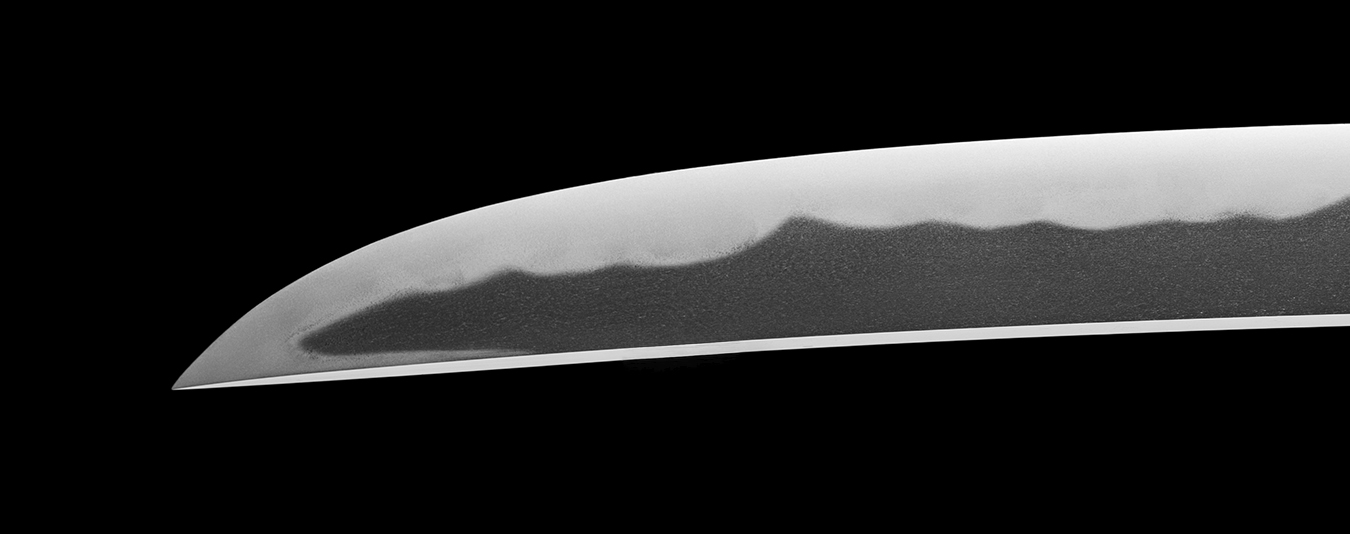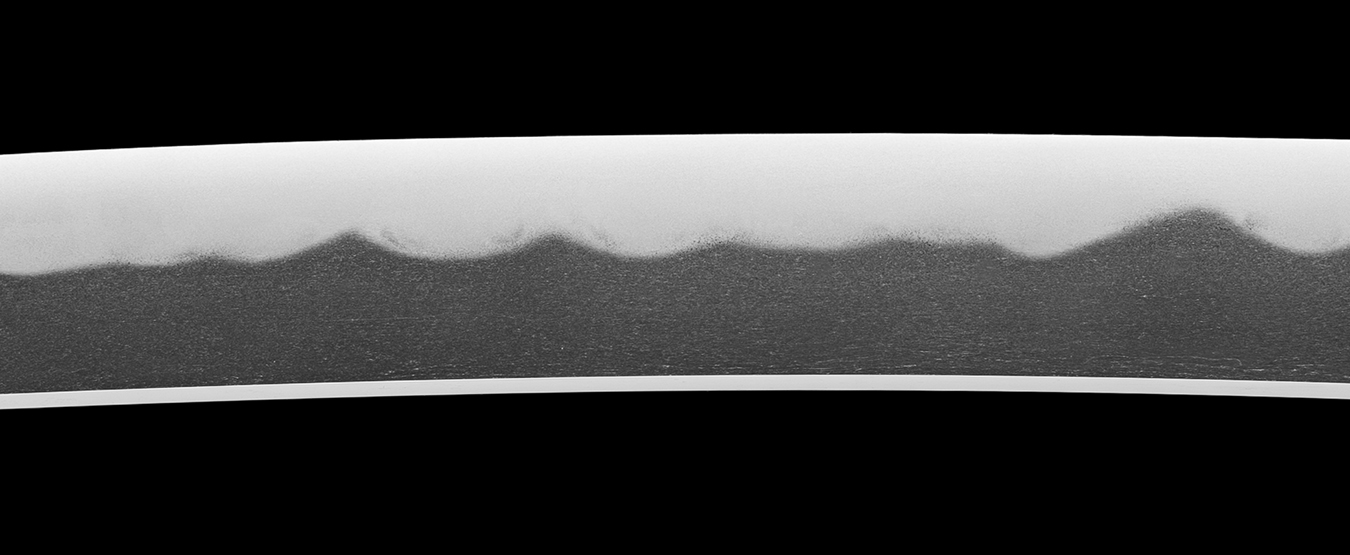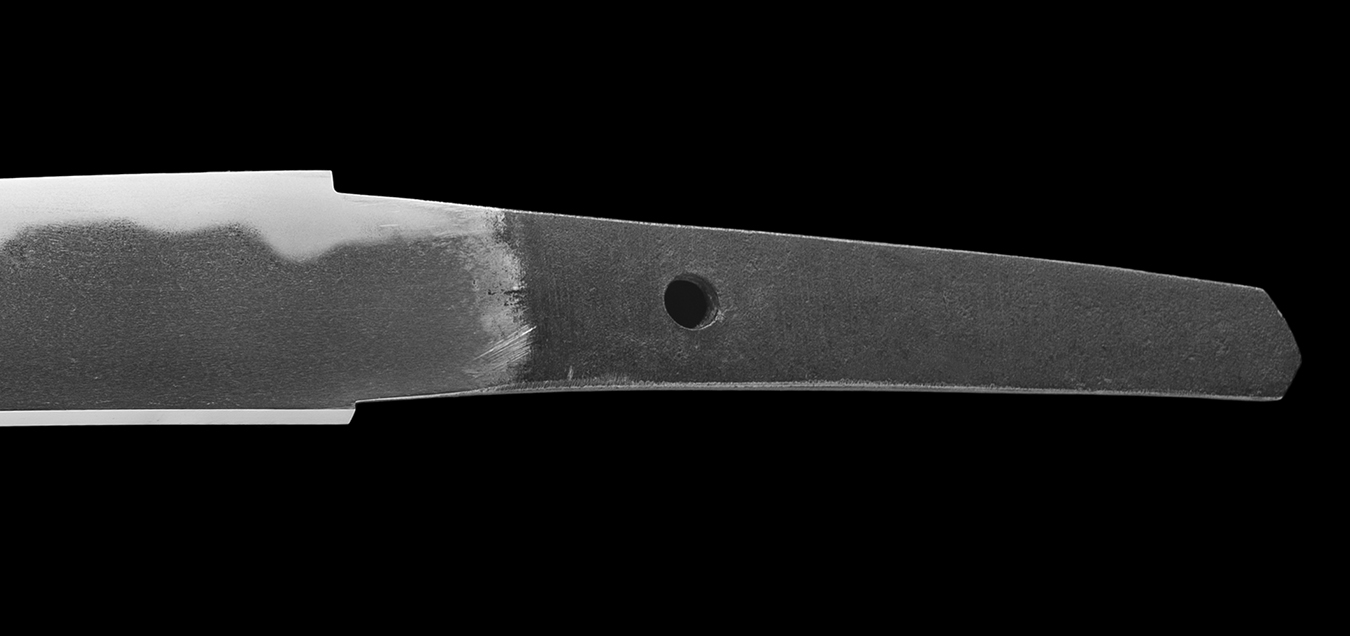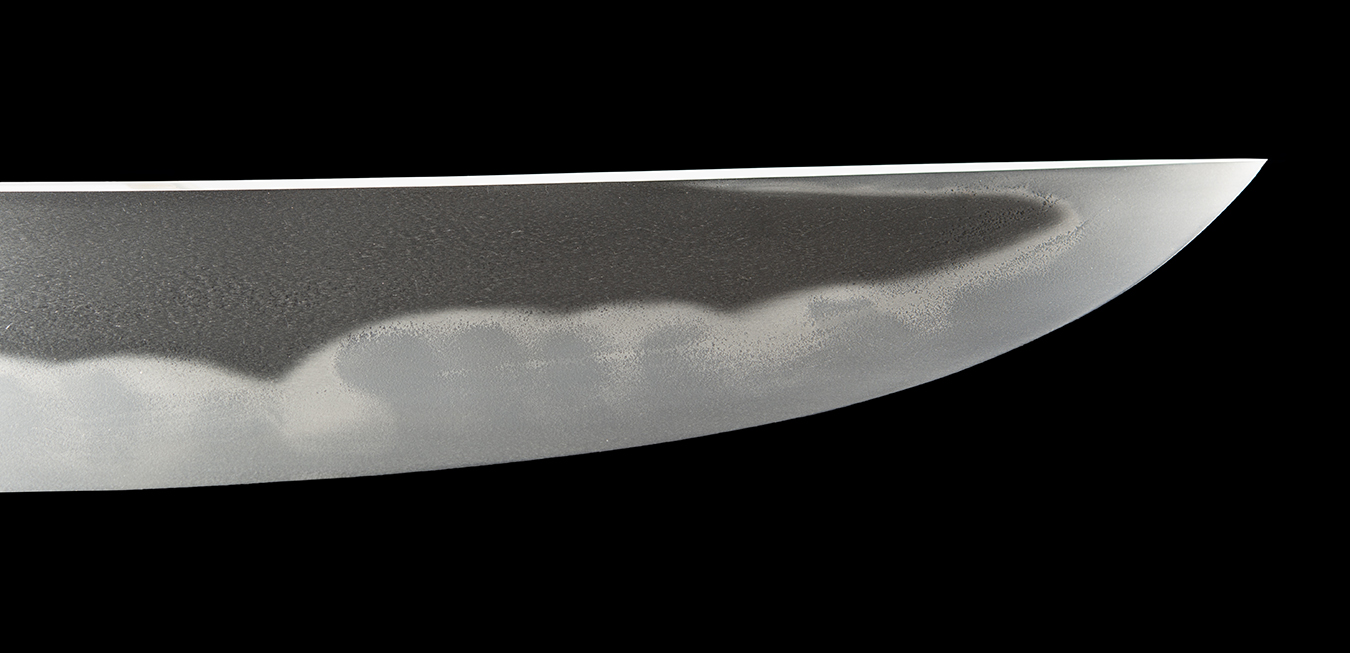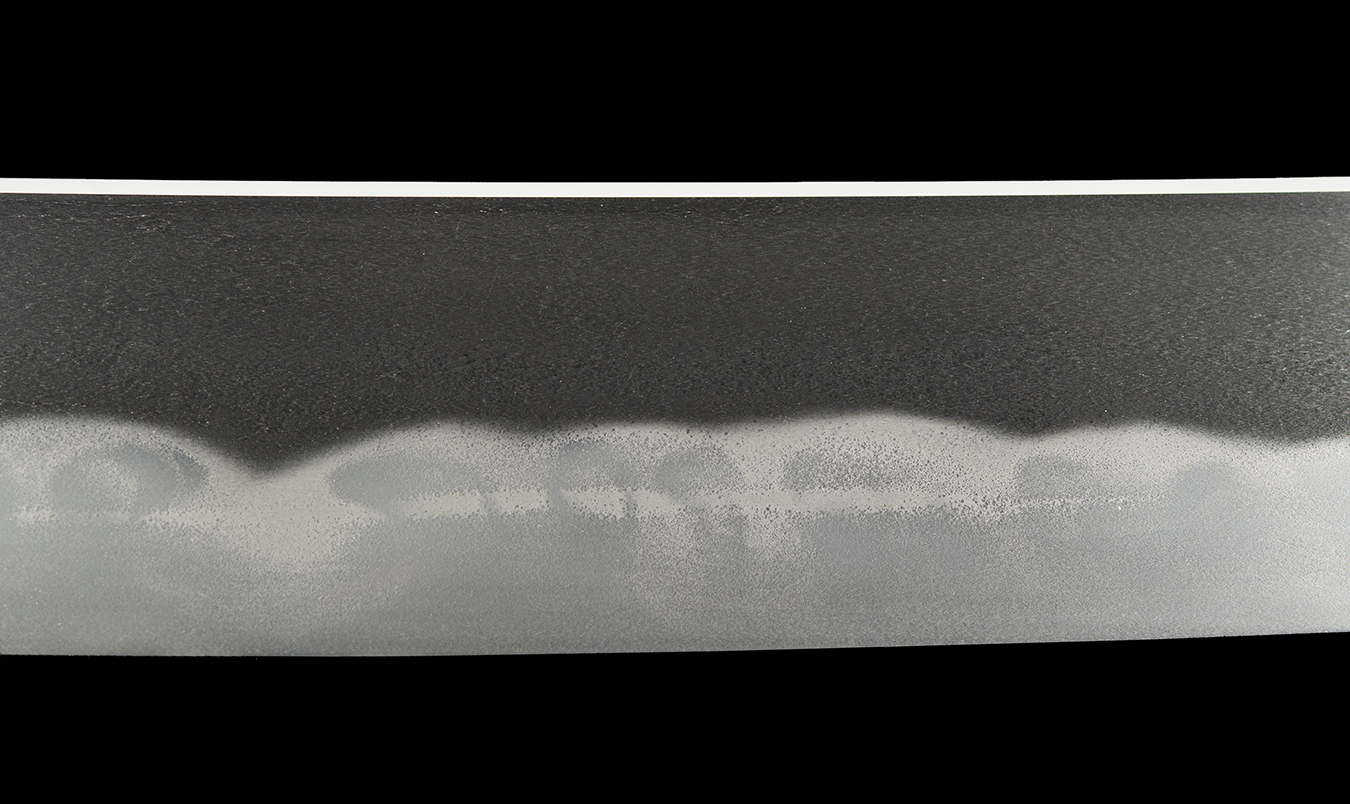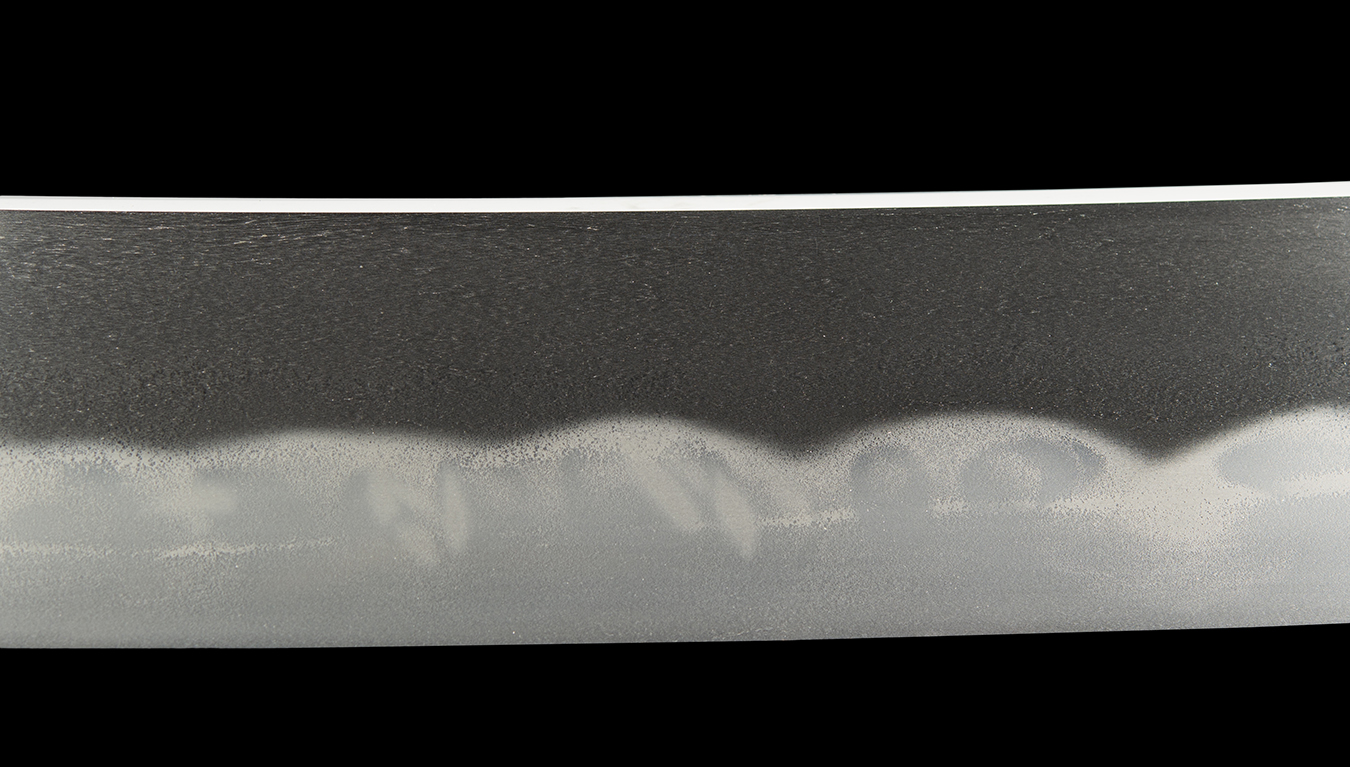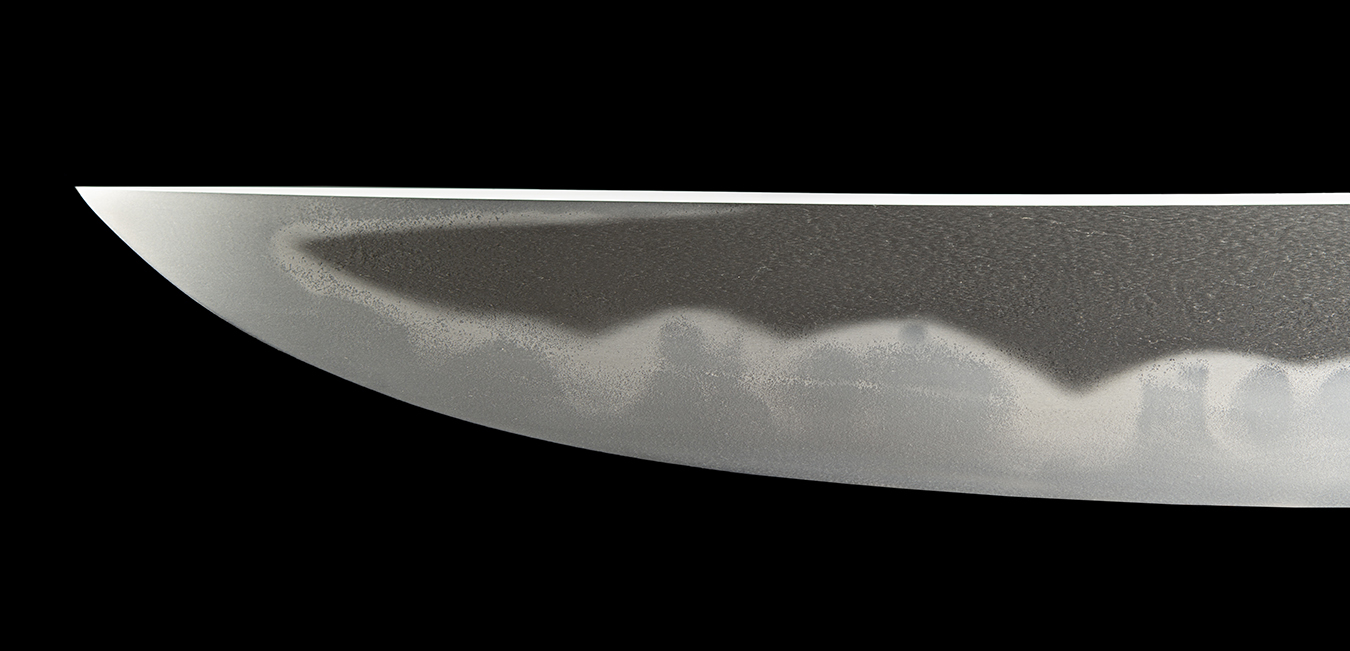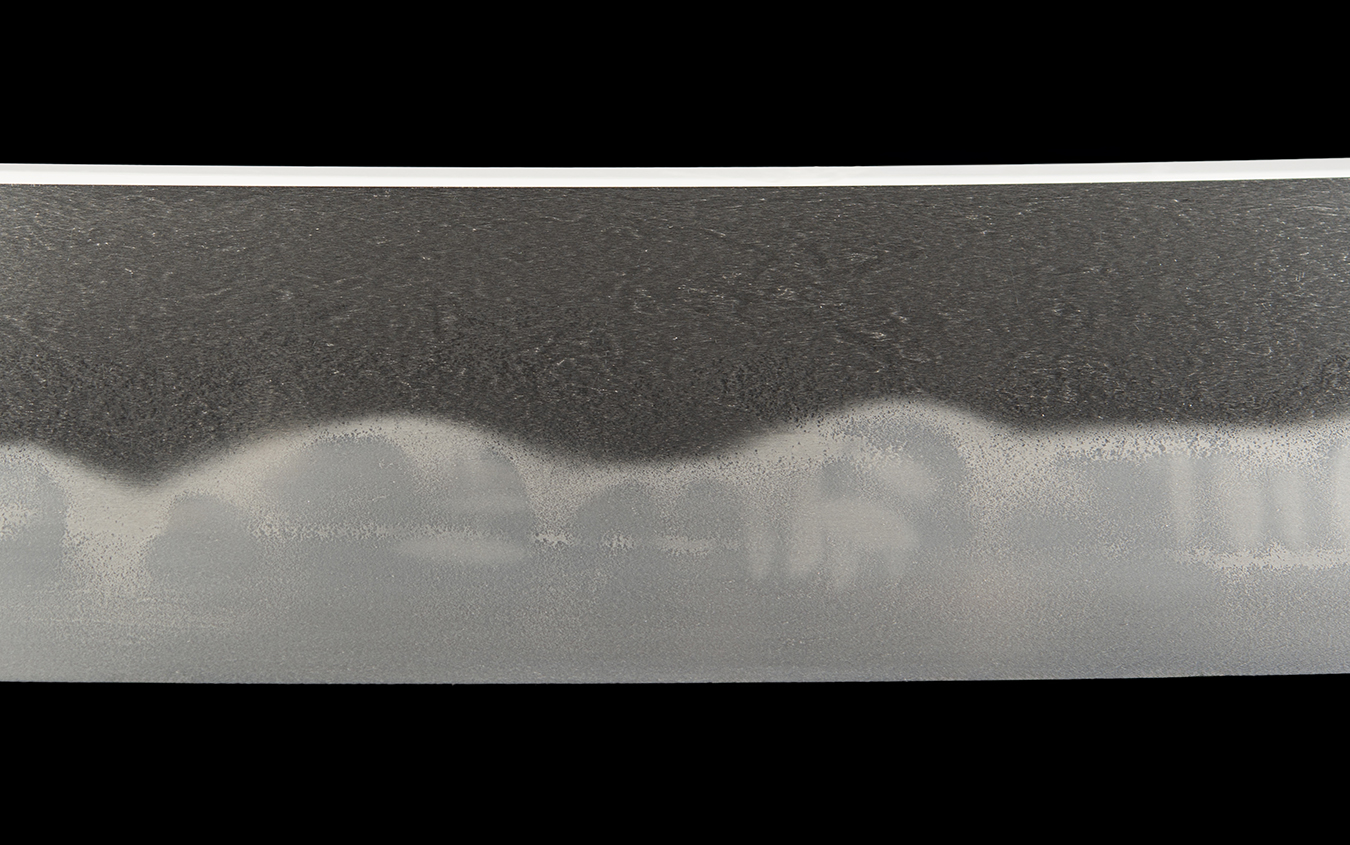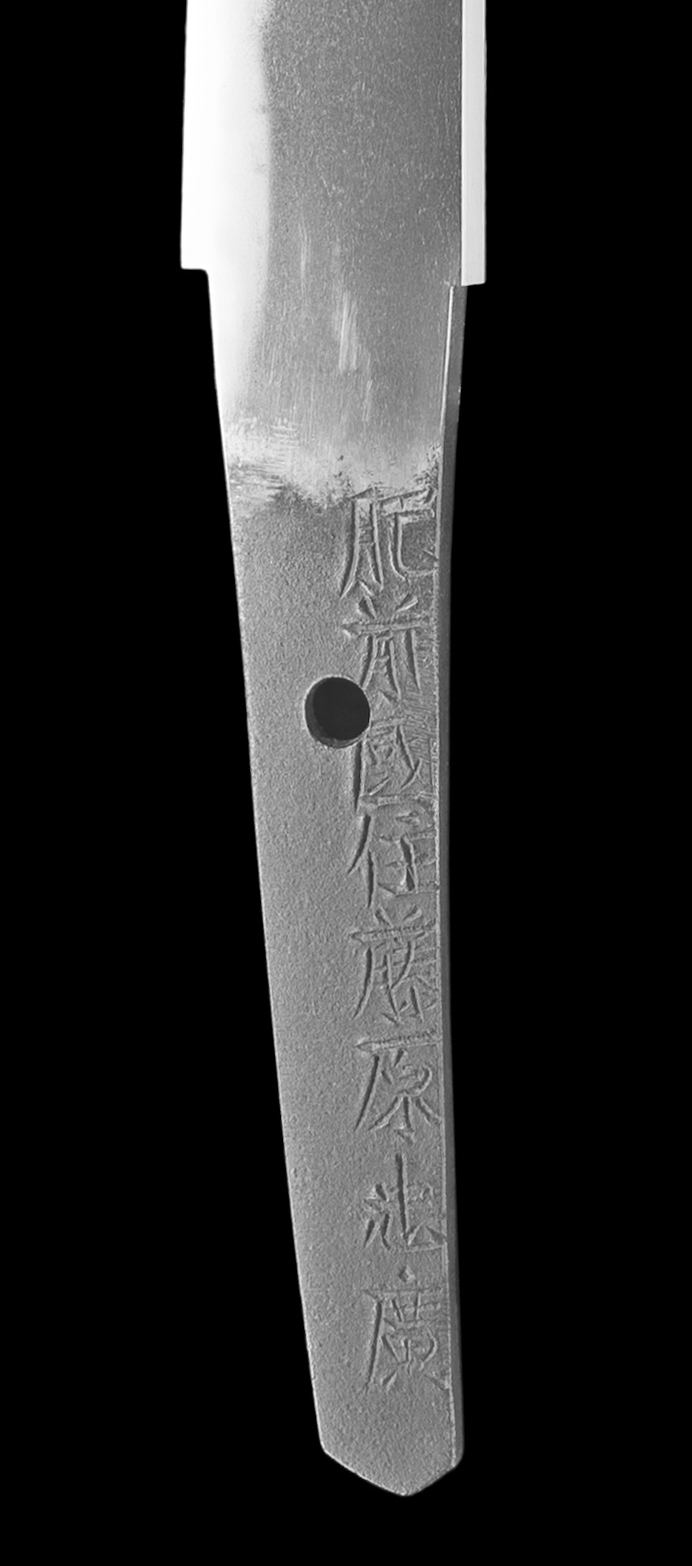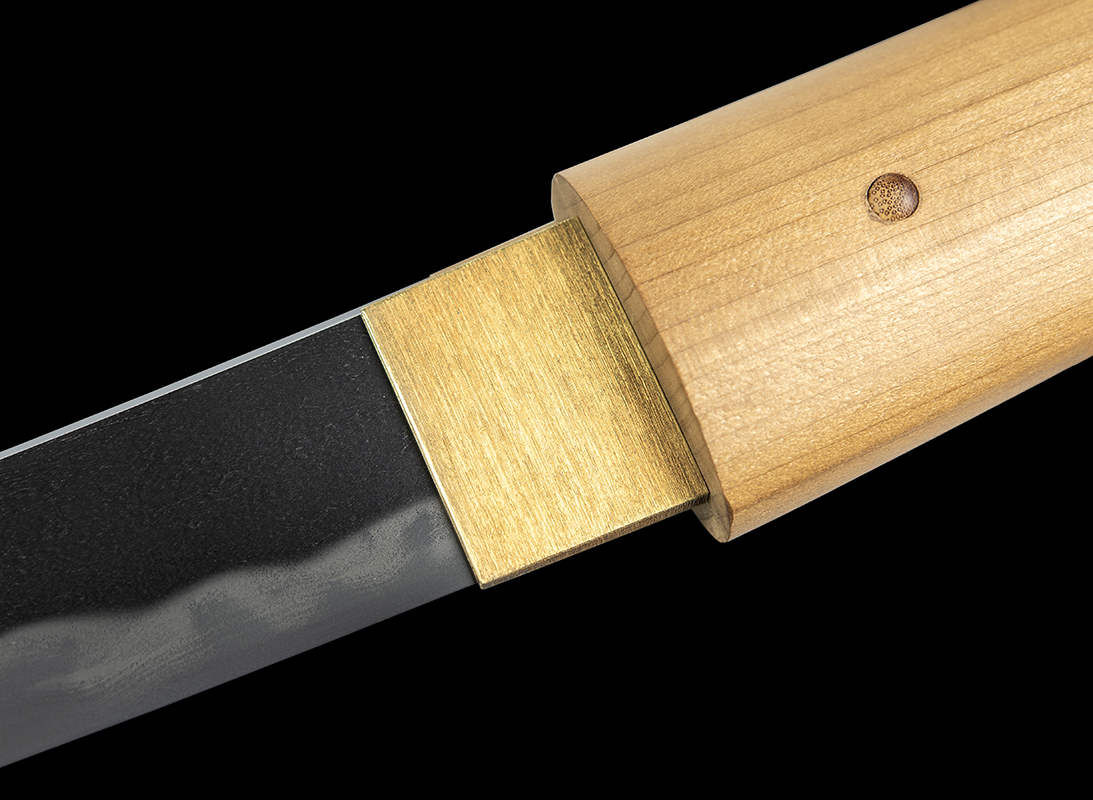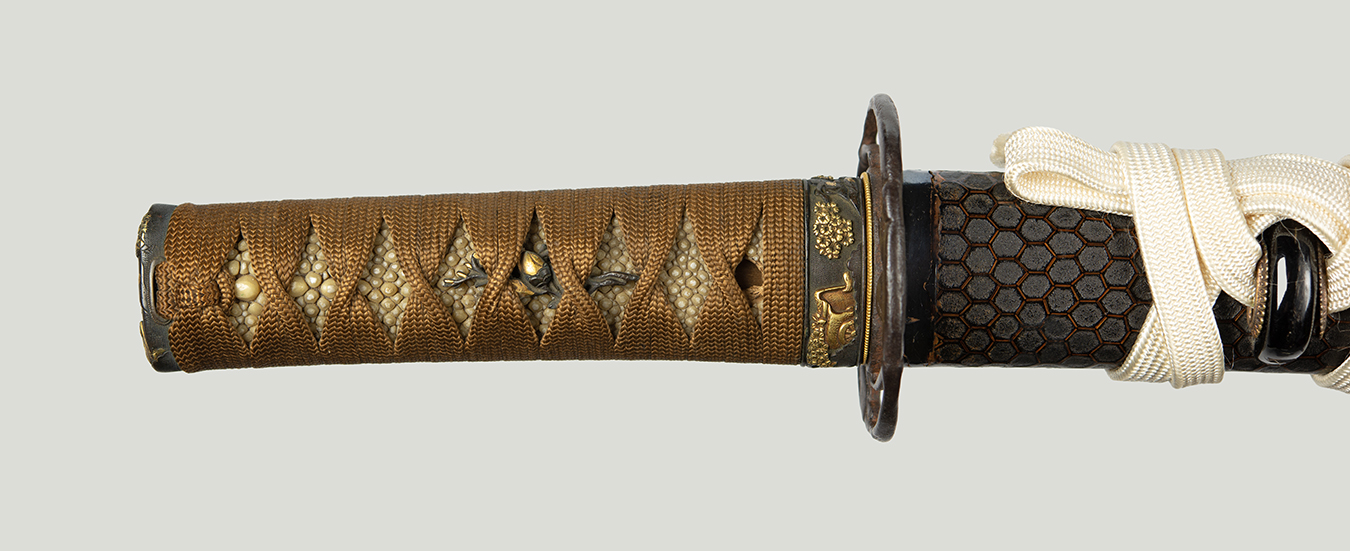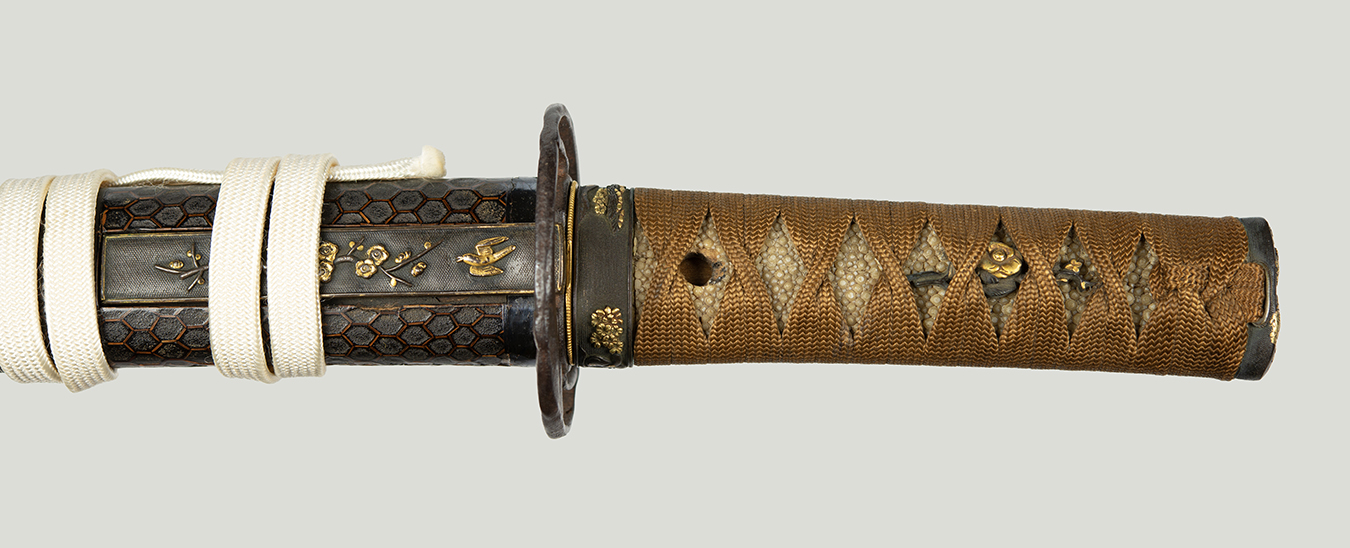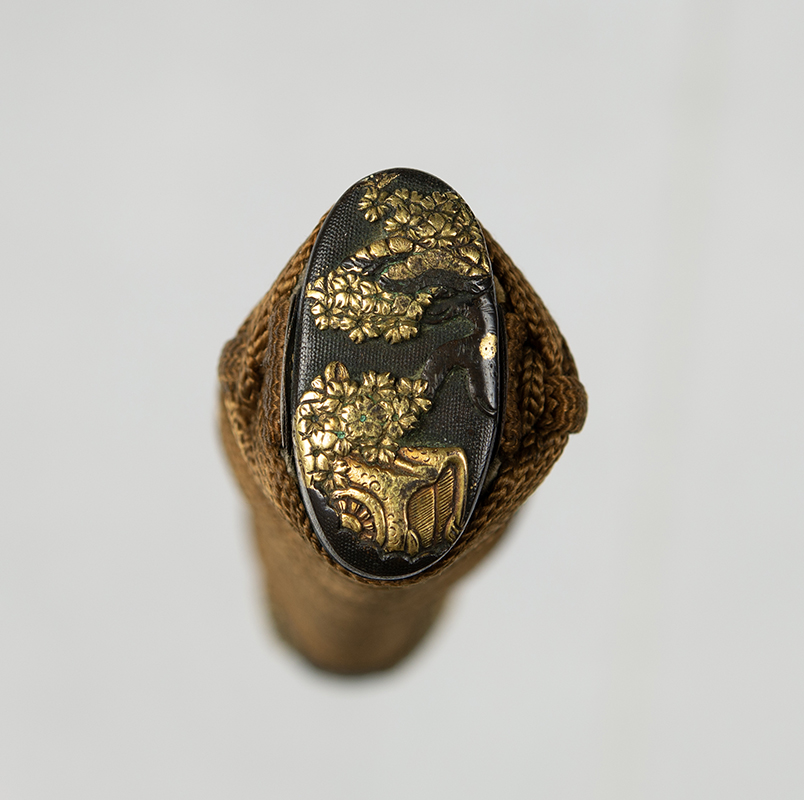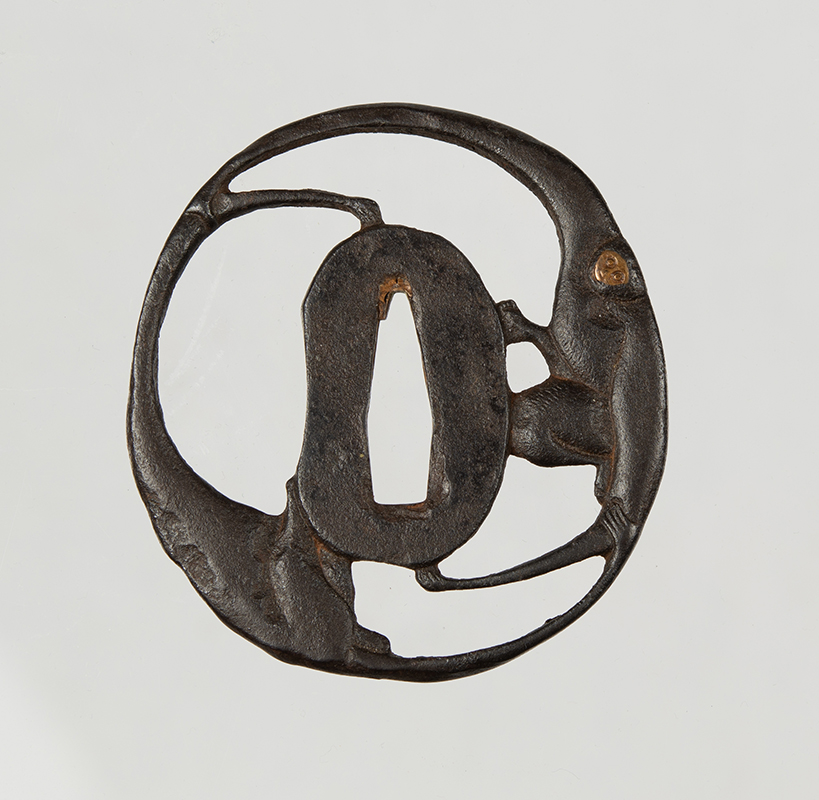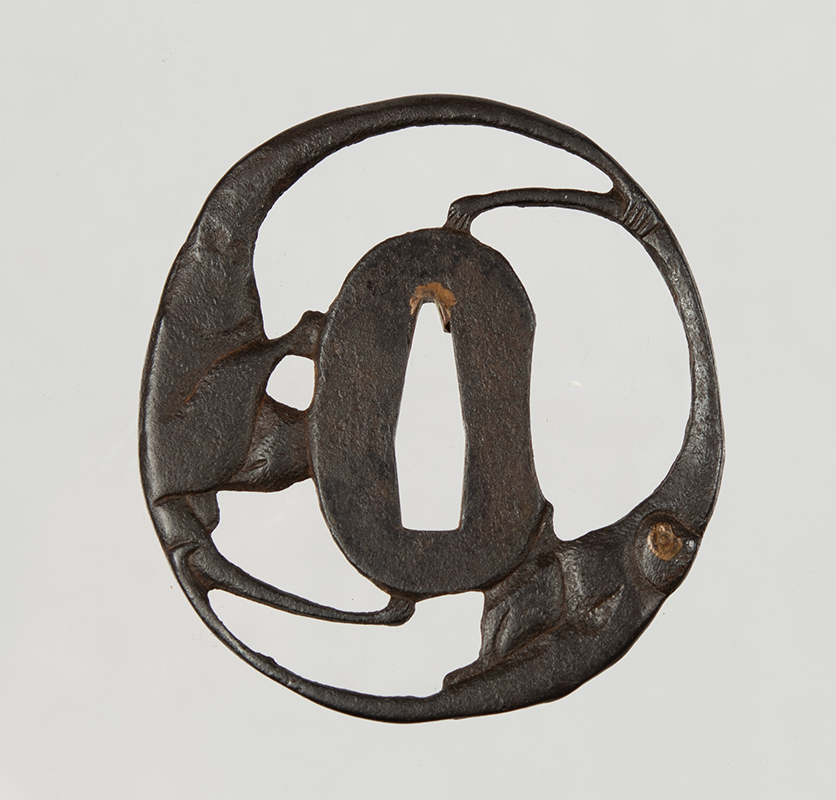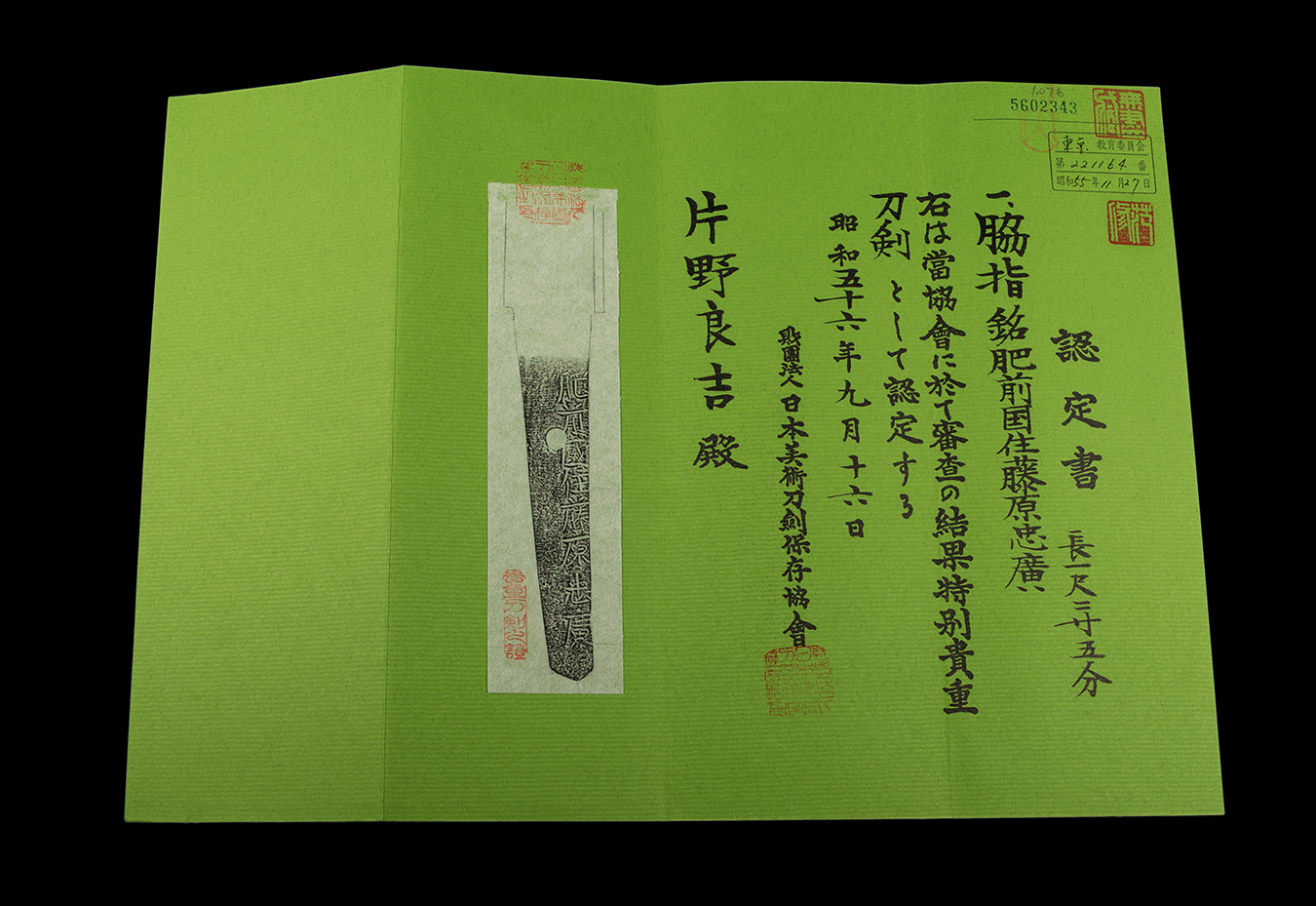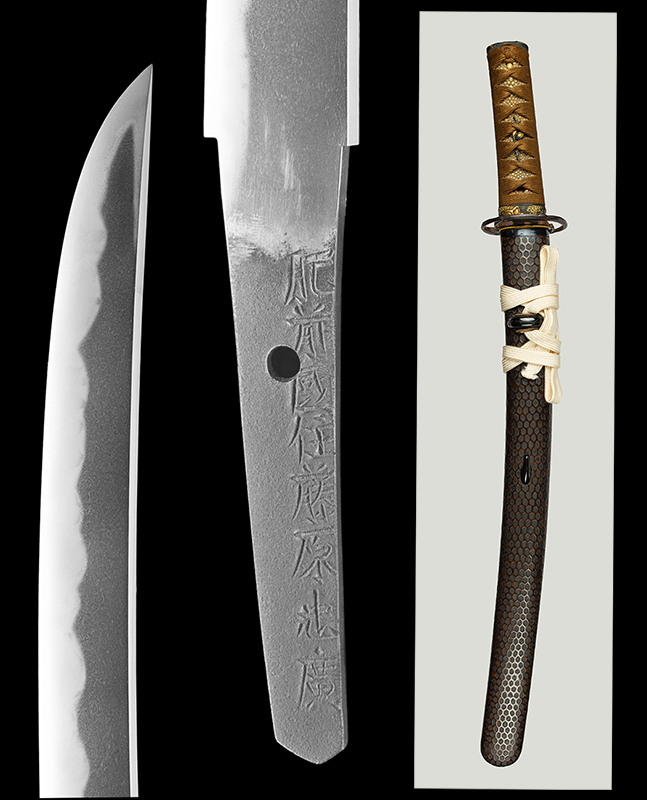|
| |||||||||||||||||||||||||||||||||||||||||
Hamon : Nie-deki gunome midare. The powerful nioi guchi is thick, bright and consistent in thickness throughout the length of the blade. Gunome have dots of nie in the center and appear like eyes. Thick ashi are present in the gunome valleys. Vivid streaks of nie can be seen in several areas and there is sunagashi.
Boshi : Thursted ko-maru with a long kaeri. The nioi guchi is clear all the way to the tip of the kaeri.
Kitae : Ko-nuka hada. The jigane is tightly forged. The kitae pattern is vivid and visually stunning. The entire surface is covered with ji-nie mixed with chikei.
About this sword : This is a top-tier example of Hizen workmanship. This wakizashi is by the shodai Hizen Tadahiro (Tadayoshi). He is one of the most famous makers in sword history. He is ranked as Saijo saku by Fujishiro and Saijo-O-Wazamono by the Yamada family of sword testers. Furthermore, his work using the mei of Tadahiro is ranked at 10 million yen in the Toko Taikan. Please take your time to carefully study all the photos below. The first set of images featuers lighting to show the jigane and then next set of images is designed to show the hataraki in the hamon. The jiba and quality of polish is fantastic. The only negative factor at play here is that the nakago was altered on the nakago mune at some point in this blade's history. Otherwise, this is a flawless work with a jiba that is so stunning, it is a sword lovers dream to appreciate.
Tadahiro's civilian name was Hashimoto Shinzaemon. He was born in 1572. His father was Hashimoto Michihiro. Tadahiro's first mei was Tadayoshi, which he is well-known as. He was hired by Nabeshima Naoshige, daimyo of the Saga, for an annual salary of 25 koku. He was sent to study under Umetada Myoju in 1596. He returned to Hizen in 1598 and moved from Nagase to the castle town of Saga. He received the honorary title of "Musashi no Daijo" and permission to use the Fujiwara name in 1624. At this time, he changed his professional name to Tadahiro. He passed away in 1632 at the age of 61.
This blade is accompanied by an Edo period koshirae. The saya features a meticulously done honeycomb pattern in cinnabar urushi. The tsuba is iron sukashi of two monkeys and looks to be Shoami work. The fuchi/kashira are shakudo nankao in the theme of a hindered cart, alluding to the "Tale of Genji". The floral menuki are shakudo with gold nunome details. The kozuka is most likely ko-kinko work and in shakudo nanako. The theme of the kozuka is a bush warbler (uguisu) in a plum tree. There is some slight urushi loss on the seams of the saya. Otherwise, the koshirae is in good condtion. There is an old tsunagi for the koshirae and a shira-saya for the blade.
This Tadahiro has a 1981 NBTHK Tokubetsu Kicho Nintei-sho certificate. This sword is from the collection of Professor Arnold Frenzel. It was a favorite blade of his and one that was admired by many. I can not imagine a world in which this blade would not be a Juyo candidate of great promise, if the nakago was in perfect condition. This is an opportunity to own a work of the highest caliber at a price far less than what such workmanship typically commands.


